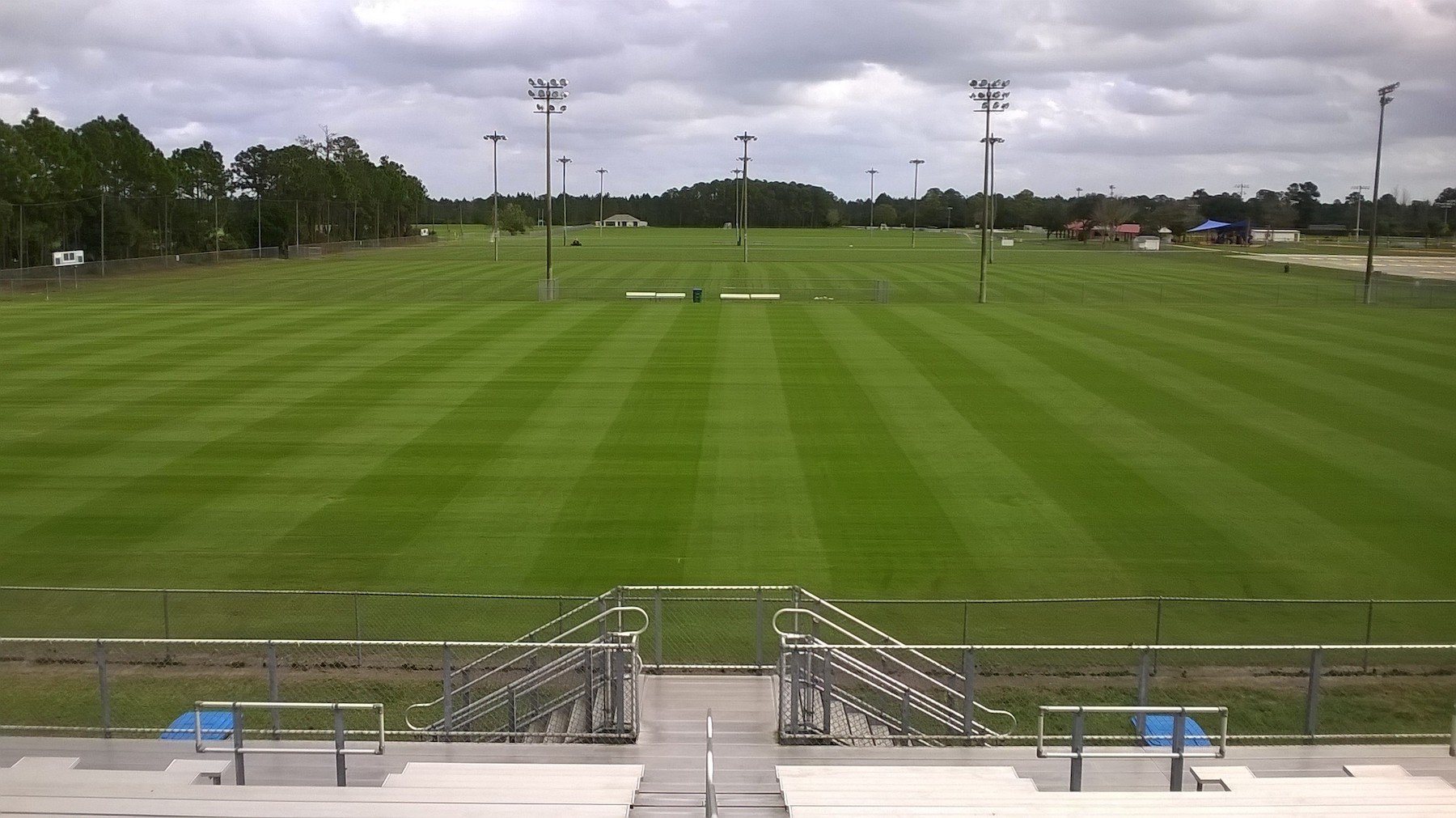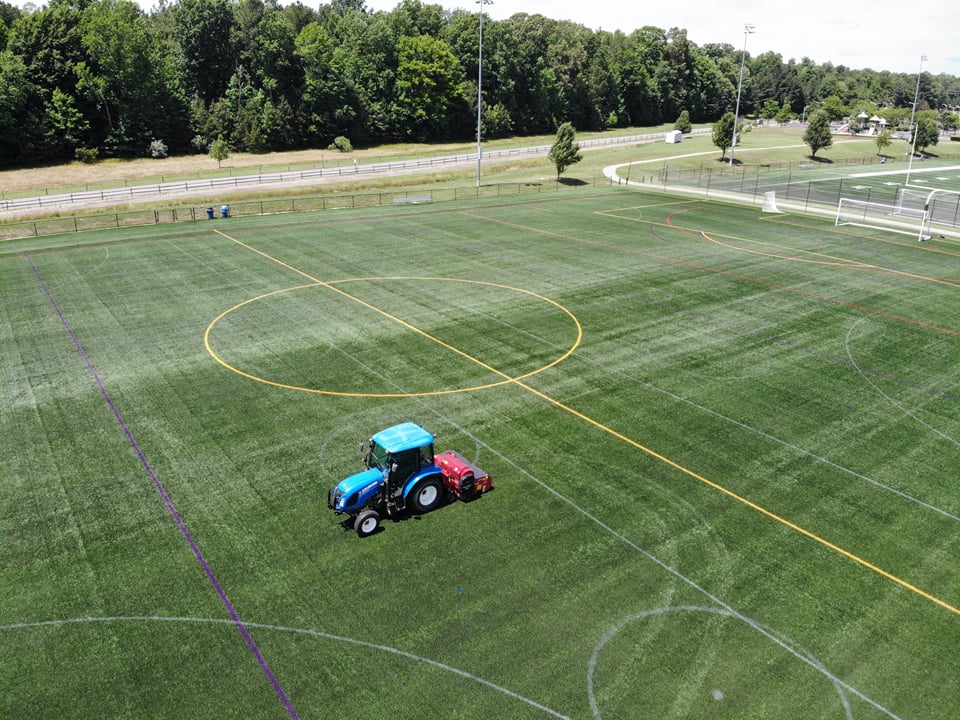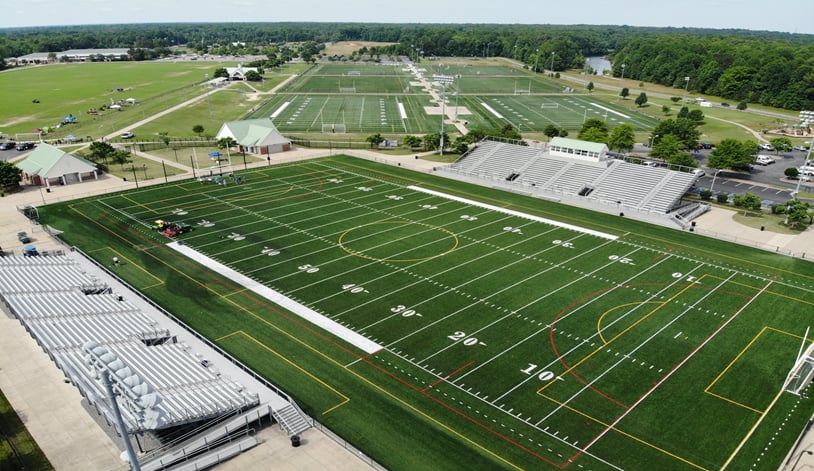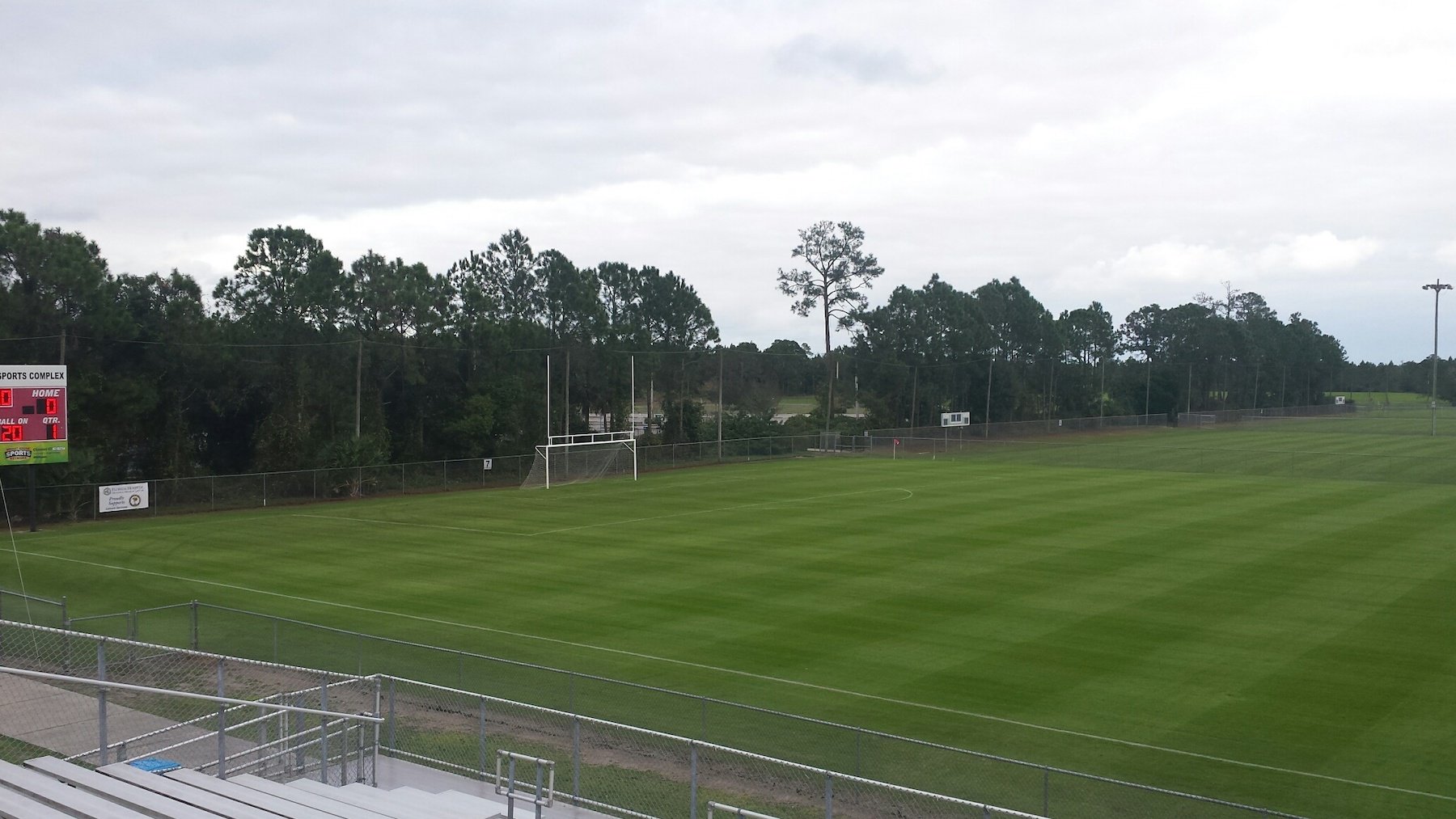Whether you are looking to replace an older field or you’re installing a brand new one, you want to make the best choice for your athletic complex. The first decision you’ll likely have to make is artificial turf vs. natural grass for athletic fields.
As with most choices to be made, there are pros and cons to both. You want the best playability and a surface that will be safe and desirable for athletes to use. But you’ll also need to consider the maintenance, initial cost, and location specific factors that come into play with this choice.
Let’s look more deeply at some of the key factors that you should be considering if you’re trying to choose between artificial turf vs. natural grass for athletic fields. Because want you to feel confident that you’re making the best choice for your specific needs.
Maintenance of Artificial Turf vs. Natural Grass
When it comes to long-term durability of your athletic field, it largely comes down to how well the field has been maintained over the years. The maintenance of your playing surface is ultimately a protection of your investment.
And that’s true for both artificial turf as well as natural grass fields.
The truth is, neither of these options is a permanent solution. Both artificial turf and natural grass surfaces have an average expected lifespan; neither can be expected to last forever. Eventually, both will need to be replaced. But if you want to get the most years of play out of your field before that happens, you absolutely need to invest in maintaining it. Again, this is equally true for both surface types.
The maintenance of artificial turf generally involves grooming/deep cleaning and repairs when they are needed. Some of the materials needed for synthetic turf maintenance include paint remover, disinfectants, gum remover, infill, and more. It can be more complex to maintain synthetic fields that are used for multiple sports and/or events (particularly if they need to be marked out).
The maintenance for natural grass involves services like mowing, grading, irrigation, seeding, and topdressing (to name just a few). So, in terms of the number of different services needed, natural turf does require a bit more. After all, you are maintaining a living and growing thing.
Comparing the Cost of Artificial Turf vs Natural Grass
There are many factors that will impact the installation cost of artificial turf vs. natural grass.
According to the Sports Turf Managers Association (STMA), the following can dramatically impact the construction/installation cost of either a synthetic or a natural turf.
- Field size
- Location
- Labor
- Amount of site work needed
- Estimated number of games
- Types of activities
The STMA estimates that the cost to build a synthetic field usually ranges between $6 to $10.25 per square foot.
The cost to construct a natural grass field can be anywhere from $1.50 to as much as $8 per square foot. The grass type used can have a major impact on cost as well.
But in terms of maintenance cost, it can be comparable. It really depends on what the field is being used for and how often it is used. Again, this is true for either a synthetic or a natural turf field.
STMA ran a report with a number of different case studies related to sports turf maintenance.
- As an example, according to the STMA report, Indiana State University- Michigan State University spends around $22,760 per year to maintain their synthetic field.
- Duke University, on the other hand, spends around $24,550 per year to maintain their sand-based, natural turf field.
In general, the cost can be comparable for the maintenance of artificial turf vs natural grass.
You should also keep in mind that there are costs of equipment and materials if you plan to perform these services in-house. As an example, the STMA reported that the cost of equipment purchased by Indiana State University- Bloomington- for their synthetic field maintenance was around $23,605.
Weighing Artificial Turf vs Natural Grass for Athletic Fields for Individual Needs
In addition to comparing maintenance and cost, you obviously also want to weigh your options and decide which field type is best for your complex and your players’ needs.
There are various factors that can differ from one field type to another. One is heat. Experts agree that synthetic field surface temperatures can be more greatly impacted by the sun and heat. Maximum surface temperatures recorded during hot and sunny conditions ranged from 140 to 183 degrees.
Natural grass, on the other hand, has been shown to be a temperature reducer. The temperature of natural grass rarely rises above 85 degrees, though in mid-summer, they have been recorded higher.
Climate also has to come into play when considering the field surface that will work best for you. In temperate climates, where you can play 12 months out of the year, a natural field might be of the most interest.
But in the more northern regions of the country, a synthetic field might just make a lot more sense so that you can extend the length of your season and maintain playability on your field.
It helps to talk to a sports field expert to begin to narrow down which choice is best for you. Let them know what you want to accomplish and you can weigh the pros and cons of each option.
Working with Yellowstone for Sports Field Maintenance
Whether you plan to invest in an artificial sports field or a natural turf field, you know that maintenance will be the key to the long-term success of this investment. Not only can proper maintenance decrease the risk of accidents and injuries, but it can also increase the overall lifespan of your field.
Just remember, there is no such thing as a “maintenance free” turf, no matter which option you choose. Both are going to require ongoing expert care if you want to truly get the most out of them.
At Yellowstone Landscape, we offer sports field maintenance to help you protect your investment in your turf. Once you make the decision of artificial turf vs natural grass for athletic fields, then this is one less burden that you have to deal with going forward. You can rest assured that whichever turf you chose is going to continue to look and perform its best thanks to receiving the best care.
We know this is a huge decision and we’re here to help in any way that we can. When it comes to maintaining the field you’ve invested in, we’re committed to taking every detail seriously so that you can take pride in the results and feel confident you’re going to get the most out of it.
Are you ready to feel confident in making a wise choice for sports field maintenance? Request a consultation today. We’ll meet to learn more about your needs and come up with a comprehensive plan to take care of all of the details for you.


